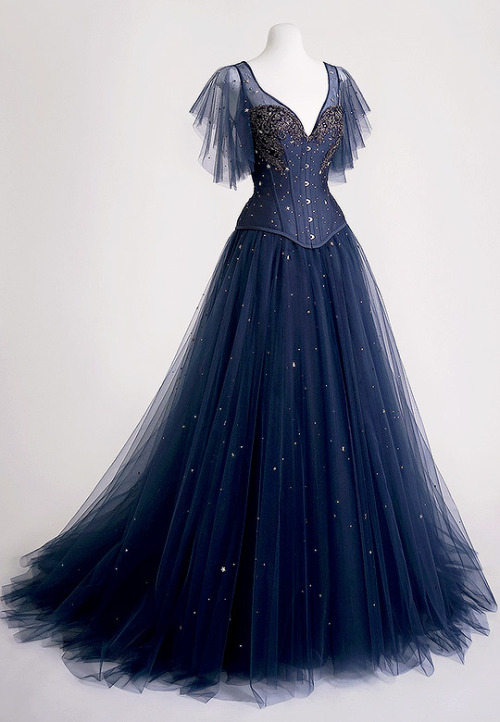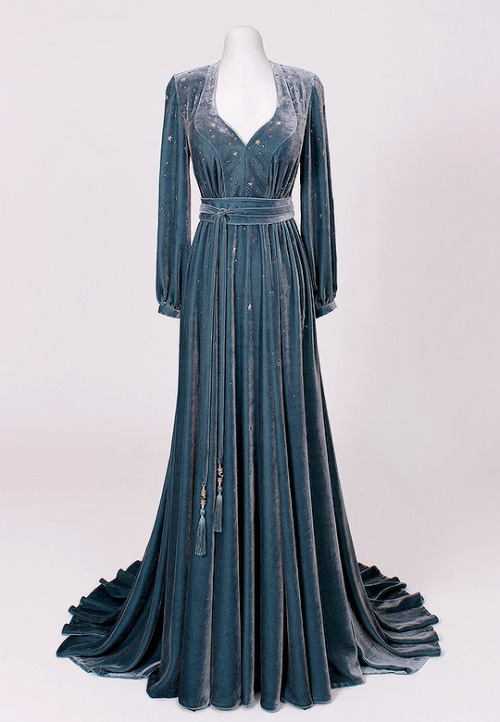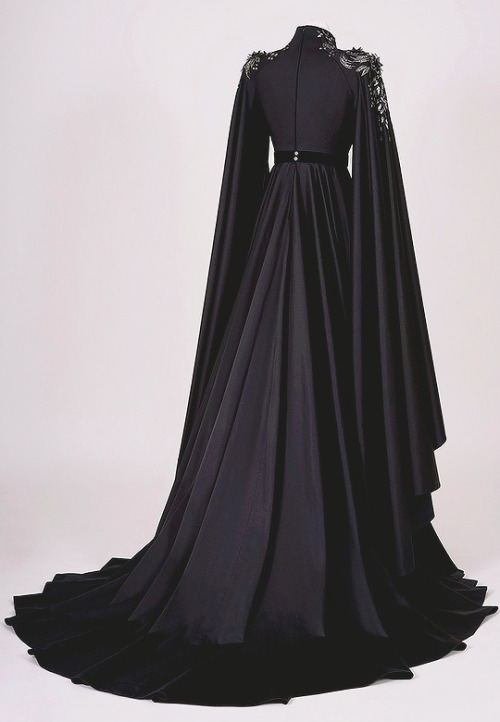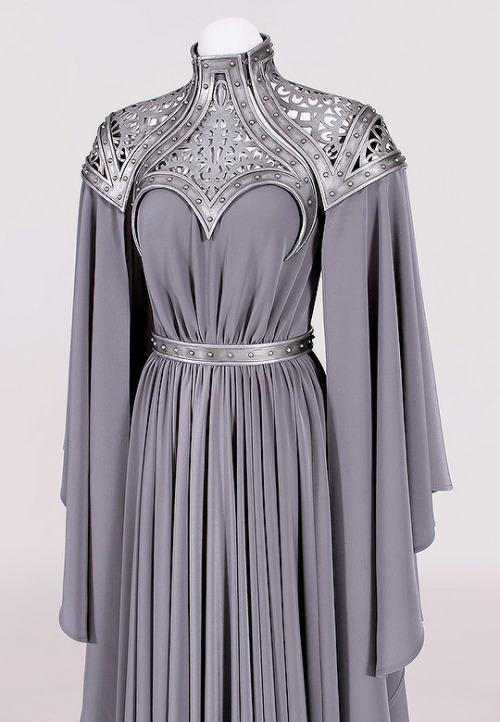“Wait, There Are People Blaming The Writers?”
“Wait, there are people blaming the writers?”
Are you surprised? Fandoms have become notorious anti-writer spaces. Studios love you guys. They can cut the budgets, cut the number of writers, cut the wages of the writers, and you guys always blame the writers. “The writers ruined the show!” It’s never “the studios ruined the show.”
I hate to break it to you: more than half the shows you complain were “ruined by the writers”, were ruined by the studios. Studios cut the scenes and arcs you were excited for. Studios cut the budget of the show, or even raise the budget of the show and force a “bigger, louder, bolder” tone on shows that were unexpected hits (this is where we get “the Netflix look” on every show post-Stranger Things and Queen’s Gambit).
You guys do not do your research. Half your fanfics are tagged with bad faith digs at the writers, when a few searches would reveal how strapped that show was and how poorly the writers were treated. Writers are being given a single week to write each episode—I’m not kidding, one-week-per-episode is one of the reasons for the strike. How are good arcs and scenes supposed to happen under that time limit, with a max of only four writers?
Tumblr, the self-proclaimed “pro-union, pro-worker, pro-artist” site is also a major fandom site. You guys rarely practice good faith consumer etiquette for television and film writers, because your fandom salt always turns you against writers. And studios love you for it.
Yeah, individual writers do create bad writing from time to time. But so do painters, chefs, and musicians. Directors and actors sometimes refuse to film certain scenes or follow a show’s projected style and arc, and the writers always get the crap for a bad performance or a poorly directed episode. This isn’t to blame actors or directors; it’s to point out that you guys have one villain, and it’s always the writers. You guys never give writers the same grace you give animators, designers, directors, actors, composers, and editors.
Studios love you every time you say “the writers ruined the show.” Every single popular fandom is guilty of this. View any of the “why did the writers cut this scene, they hate my characters” talk when leaked scenes hit the internet. Writers barely get paid for what they do write. You think they’re writing scenes and then happily throwing them in the shredder? You guys just eat the talk that studios put out. Always have.
More Posts from Ignorethisrandom and Others

Alessandro de’ Medici Alessandro de’ Medici, called “Il Moro” (“The Moor”), was born in the Italian city of Urbino in 1510. His mother was an African slave named Simonetta who had been freed. Alessandro’s paternity is uncertain. Most sources name Lorenzo de’ Medici, ruler of Urbino. But Alessandro might also have been the son of Pope Clement VII, the brother of Lorenzo II who became the head of the Medici family after Lorenzo’s death. Clement VII chose the nineteen-year-old Alessandro to become the first Duke of Florence in 1529. Pope Clement at that time was at odds not only with the Florentines who had driven out the Medici family in 1497, but also with the emperor Charles V. To solidify the allegiance that the papacy owed to the Holy Roman Empire, Alessandro was named Duke of Florence and promised the emperor’s daughter Margaret. With the help of Charles V, Clement could restore the rule of the Medici family in Florence in 1530 and make Alessandro the first reigning Duke. Supported initially by the best families, Alessandro became an absolute prince, overthrowing the city’s’ republican government. According to most historians the young duke’s reign did not begin very well. His arrogant personality, the bad behavior of his entourage, and his licentiousness – with both women and feasting – soon gave Alessandro an unsavory reputation. In addition, he made some highly unpopular political decisions including limiting the number of remunerative positions in his government. This decision alone forced many patrician families to go into exile and become enemies of his rule. Alessandro’s situation grew worse when his protector and benefactor Clement VII died in 1534. In response he took more repressive measures against his enemies, probably due to his growing fear of them and uncertainty of his support. Meanwhile, resistance against Alessandro’s reign grew among the exiles and even his cousin Ippolito plotted against the Duke. When Ippolito died unexpectedly in 1535, speculations arose that Alessandro had poisoned him. In June 1536, however, Charles V visited Florence and married his daughter to Alessandro, consolidating the Duke’s position. Nonetheless one year later, Alessandro was murdered by his own cousin Lorenzino, who fled to Venice and was hailed among the exiles as the “New Brutus.” Sources: T.F. Earle and K.J. Lowe, Black Africans in Renaissance Europe (Cambridge: Cambridge University Press, 2005); J.A. Rogers, World’s Greatest Men of Color, Volume II (New York: Macmillan, 1972).
To give you all a visual - book!sansa was the same age as laena valaryon in hotd when she was forced to marry 30 year old tyrion, who tries going ahead with their “wedding night” and when she was being sexually harrassed and assaulted by other men at court.
I’m reading Katherine by Anya Seton
and I’m torn.
On one hand, the attention to detail is breathtaking. Seton has fully immersed me in the 14th century, palaces and plagues and all. Geoffrey Chaucer’s brief appearances are delightful. The friendships Katherine forms with the other women in her life are a driving force for most of the first half of the book. Not to mention this gem:
“I am no duchess, no queen, but I have been your equal in love, for this I dare to tell you how I feel.”

On the other hand…
The romance.

I’m over two-hundred pages in, and Katherine just seems so miserable with John. They’ve barely had a conversation about something other than how they love each other…and I cannot stress how few meaningful interactions they have had leading up to their affair.
He comes onto her as soon as his wife—her friend—dies, then even stronger as her husband is dying.

And when they finally get together, he’s in talks to get married the entire time. Their “honeymoon” overlooks his future fiancee’s homeland.
He just steamrolls her hesitations and ignores how becoming his mistress decimates her sense of self-worth. And then he gives her his deceased wife’s ring as a symbol of their love!

Every declaration of love or step forward in their relationship involves her crying and hating herself and her situation, and he is infuriatingly oblivious.
I get that a book published in the 1950′s would have faced backlash if Katherine actively pursued John. And I’m sure the references to sex caused a scandal when it was first published…but I’d rather have the heroine enjoying the hero and their relationship than simply giving up.
Let’s hope the third-act break-up will lead to Katherine putting her foot down and John recognizing that she is his equal, not just in love, because right now, their “romance” reads less like a love story and more like harassment.
Mafalda would die in Buchenwald concentration camp. Think about it: the princess of Italy was arrested and sent to Buchenwald!
Her older sister Giovanna, the Tsarina of Bulgaria, and her husband Boris helped save a large population of Bulgarian Jews from deportation to concentration camps. Boris died under mysterious circumstances.

OTMAA Contemporaries: Wedding of Princess Mafalda of Savoy
Mafalda was born in 1902, making her between Anastasia and Alexei in age. Like OTMAA, her family consisted of four sisters and one brother, although her brother, Umberto, was the middle child, and the ages were a bit more spread out.
Mafalda’s mother Elena was a Montenegrin princess; Elena was educated in St. Petersburg, Russia, and her sisters Anastasia and Militza married into the Romanov family. Mafalda was a first cousin of Prince Roman Petrovich and his sisters Marina and Nadejda.
Guests at the wedding, which took place in 1925, include Romanov descendants Christopher of Greece, Carol of Romania, Olga of Yugoslavia among others.
hi, sorry to be a bother, but i was wondering if u knew any alternatives to Philippa Gregory?? I really want to get into Tudor history and I love historical fiction but I've heard so much criticism of her work xx
Unfortunately a lot of period books are going to be steeped in a certain level of creative license which sacrifices historical details to the ideal or romanticised effect. Most major Tudor writers – Weir, Plaidy, Gregory - are guilty of this. Personally I can look past this and enjoy the content for its historical setting and loose interpretation, but if that is a deal breaker for you there are a slim number of authors who will likely appeal to you. If you are disinterested in Gregory, I would recommend Alison Weir and Jean Plaidy. Their novels are chock full in historical references and are of a similar style to Gregory. As I understand it their’s are more credible, the exception being Weir tends to take a biased standpoint, and Plaidy is more of a story-writer than she is a historian.
You’ve probably already heard of Hillary Mantel’s Wolf Hall series. I read its entirety and enjoyed it, but there are errors strewn through it. On the opposite end, Adrienne Dillard’s works tend to be more true to history and from what I’ve gathered the author herself is an all-around good person. I highly enjoyed The Raven’s Widow as opposed to Gregory’s interpretation to Jane Boleyn. Olivia Longueville is also a recommended author. Sharon Kay Penman, Ken Follett, Katharine Longshore, Diane Haeger, and Margaret George all have interesting and well-researched reads. I loved the Autobiography of Henry VIII by George. It reads fantastically.
I hope this helps! Enjoy your summer reading.




Mary Queen of Scots Documents.
In February 2013 I read that the John Gray Centre in Haddington had found documents relating to Mary Queen of Scots, and you could go see them. I arrived at there a few days later and was disappointed to see no sign of them, so I enquired and was directed to a lady who said, yes they had them but were not on open display……but she could go bring them to me and let me see them!!!!
Wow there I was minutes later with the letter spread out before me and me, with a pair of white gloves, was allowed to actually handle these historic items that Mary had approved almost 450 years before!
The document dates from March 1566, when Mary had just returned to Edinburgh after fleeing to Dunbar castle and has witnessed the murder of her secretary David Rizzio just two weeks previously. It is a grant of church land to the Burgh of Haddington. While this document was not signed by Mary it is appended with an almost perfect example of her great seal.
Although in Latin and therefore unreadable to most it is a visually beautiful item with fine handwriting and of course the wax seal, I was surprised how large the seal was but the lady in the archives explained it was only personal seas that were smaller, usually on a stamp or as I imagined a ring. This would have been written by a clerk for the queen and is in near perfect condition, the white things you see on the pictures are lead weights to hold the document open as it has been fold for most of its 447 years!
The other document is more fragile and has been enclosed in a plastic case to protect it. This is a letter signed by Queen Mary and King Henry, aka Lord Darnley. The document is asking the burgesses of Haddington to remain at home from the various raids that were happening at the time. I find it amazing that these pieces of history are not just there to be viewed(on request) but that you can get up close and personal with them.
The John Gray Centre is East Lothian’s archives, a museum and local history services, it is free to visit and it was free for me to ask to see things held in the archive, the only thing you are charged for is if you want to take some pics, the fee then was a one off £5.
If I didn’t know better, I’d say this was King Evan Peters. These two actors do look pretty similar.


All hail His Grace, Aegon, Second of his Name, King of the Andals and the Rhoynar and the First Men, Lord of the Seven Kingdoms and Protector of the Realm.
HOUSE OF THE DRAGON | 1.09 The Green Council
-
 chaotic-snowflake liked this · 1 month ago
chaotic-snowflake liked this · 1 month ago -
 ivysrebloggings reblogged this · 1 month ago
ivysrebloggings reblogged this · 1 month ago -
 aalinaaaaaa liked this · 1 month ago
aalinaaaaaa liked this · 1 month ago -
 solemn-vow reblogged this · 1 month ago
solemn-vow reblogged this · 1 month ago -
 danger-flammable reblogged this · 1 month ago
danger-flammable reblogged this · 1 month ago -
 morningstarwhipped reblogged this · 1 month ago
morningstarwhipped reblogged this · 1 month ago -
 justanotherqueerpunk reblogged this · 1 month ago
justanotherqueerpunk reblogged this · 1 month ago -
 thedeceasedgod liked this · 1 month ago
thedeceasedgod liked this · 1 month ago -
 captain0fcrows liked this · 1 month ago
captain0fcrows liked this · 1 month ago -
 curse-of-misery reblogged this · 1 month ago
curse-of-misery reblogged this · 1 month ago -
 st4rrl1ghtwastaken reblogged this · 1 month ago
st4rrl1ghtwastaken reblogged this · 1 month ago -
 st4rrl1ghtwastaken liked this · 1 month ago
st4rrl1ghtwastaken liked this · 1 month ago -
 darkluminosity reblogged this · 1 month ago
darkluminosity reblogged this · 1 month ago -
 quoththeowl31 liked this · 1 month ago
quoththeowl31 liked this · 1 month ago -
 a-pansexual-with-pancakes liked this · 1 month ago
a-pansexual-with-pancakes liked this · 1 month ago -
 a-pansexual-with-pancakes reblogged this · 1 month ago
a-pansexual-with-pancakes reblogged this · 1 month ago -
 optimisticmiraclefest reblogged this · 2 months ago
optimisticmiraclefest reblogged this · 2 months ago -
 optimisticmiraclefest liked this · 2 months ago
optimisticmiraclefest liked this · 2 months ago -
 mimichx liked this · 4 months ago
mimichx liked this · 4 months ago -
 voidrainbowwolf reblogged this · 4 months ago
voidrainbowwolf reblogged this · 4 months ago -
 voidrainbowwolf liked this · 4 months ago
voidrainbowwolf liked this · 4 months ago -
 whitesinhistory liked this · 4 months ago
whitesinhistory liked this · 4 months ago -
 mirajanefairytailmage liked this · 4 months ago
mirajanefairytailmage liked this · 4 months ago -
 boudica176 liked this · 4 months ago
boudica176 liked this · 4 months ago -
 annae4ev5 liked this · 6 months ago
annae4ev5 liked this · 6 months ago -
 wandering-not-lost04 liked this · 6 months ago
wandering-not-lost04 liked this · 6 months ago -
 shallahraekwon062488 reblogged this · 7 months ago
shallahraekwon062488 reblogged this · 7 months ago -
 shallahraekwon062488 liked this · 7 months ago
shallahraekwon062488 liked this · 7 months ago -
 stardust-moth liked this · 7 months ago
stardust-moth liked this · 7 months ago -
 lily-wholockian reblogged this · 7 months ago
lily-wholockian reblogged this · 7 months ago -
 lily-wholockian liked this · 7 months ago
lily-wholockian liked this · 7 months ago -
 telltale-apologist liked this · 7 months ago
telltale-apologist liked this · 7 months ago -
 chroniccrying liked this · 7 months ago
chroniccrying liked this · 7 months ago -
 alimpsonsnotdragonfable reblogged this · 7 months ago
alimpsonsnotdragonfable reblogged this · 7 months ago -
 alchemyfarie reblogged this · 8 months ago
alchemyfarie reblogged this · 8 months ago -
 stealth-liberal reblogged this · 8 months ago
stealth-liberal reblogged this · 8 months ago -
 smallblueblondie liked this · 8 months ago
smallblueblondie liked this · 8 months ago -
 autumntipsy reblogged this · 9 months ago
autumntipsy reblogged this · 9 months ago -
 sorryimjustareallyshyanon liked this · 9 months ago
sorryimjustareallyshyanon liked this · 9 months ago -
 pumpkin-hotchocolate reblogged this · 9 months ago
pumpkin-hotchocolate reblogged this · 9 months ago -
 randomlygeneratedbanana liked this · 9 months ago
randomlygeneratedbanana liked this · 9 months ago -
 art3misa635 liked this · 10 months ago
art3misa635 liked this · 10 months ago -
 elisa3568 liked this · 10 months ago
elisa3568 liked this · 10 months ago -
 dancerofmidnightstorm liked this · 10 months ago
dancerofmidnightstorm liked this · 10 months ago -
 comrademango liked this · 10 months ago
comrademango liked this · 10 months ago -
 sassysmartarse reblogged this · 10 months ago
sassysmartarse reblogged this · 10 months ago -
 kellymadigan reblogged this · 10 months ago
kellymadigan reblogged this · 10 months ago -
 not-a-bot-just-an-introvert-fan liked this · 11 months ago
not-a-bot-just-an-introvert-fan liked this · 11 months ago -
 willievermakeithome liked this · 11 months ago
willievermakeithome liked this · 11 months ago









